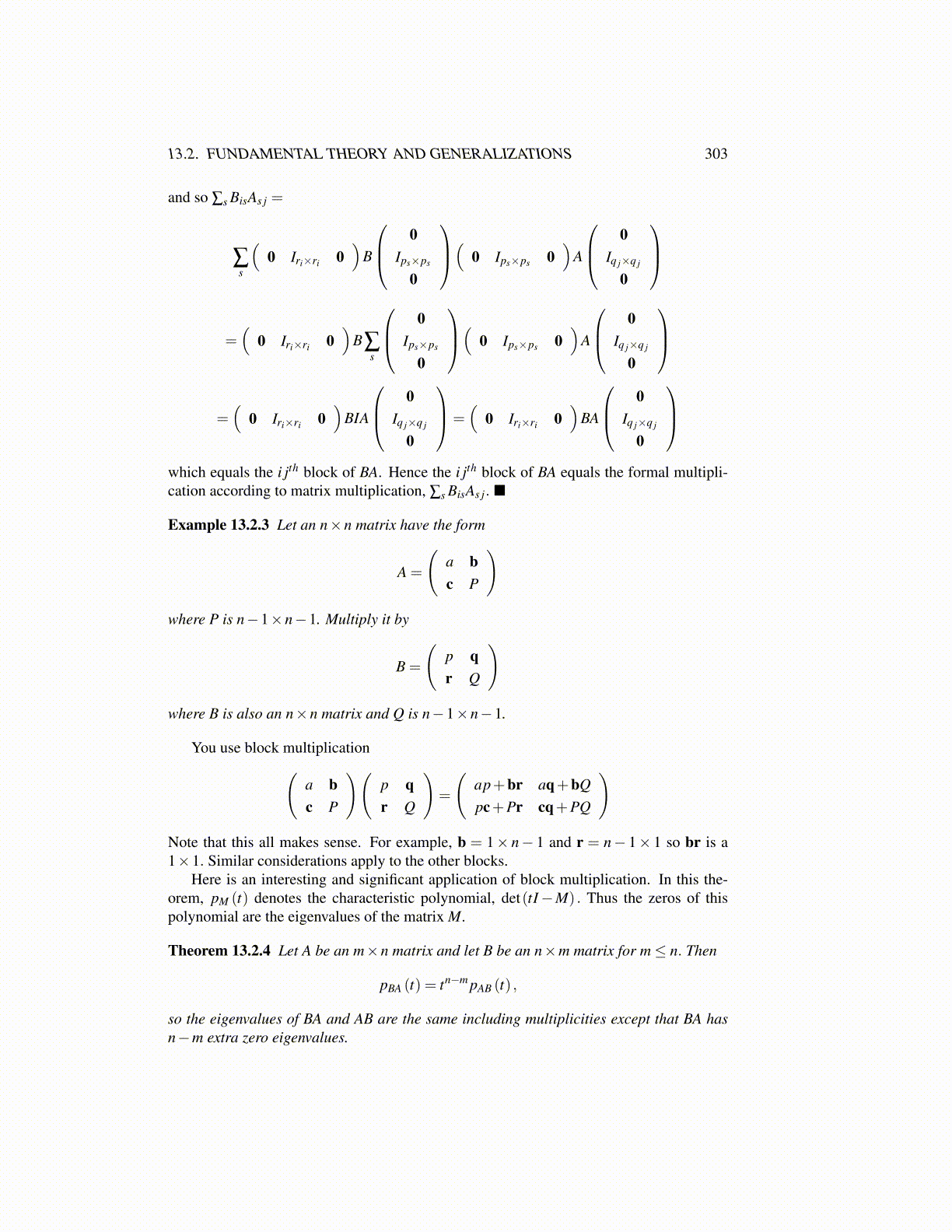
13.2. FUNDAMENTAL THEORY AND GENERALIZATIONS 303
and so ∑s BisAs j =
∑s
(0 Iri×ri 0
)B
0Ips×ps
0
( 0 Ips×ps 0)
A
0Iq j×q j
0
=(
0 Iri×ri 0)
B∑s
0Ips×ps
0
( 0 Ips×ps 0)
A
0Iq j×q j
0
=(
0 Iri×ri 0)
BIA
0Iq j×q j
0
=(
0 Iri×ri 0)
BA
0Iq j×q j
0
which equals the i jth block of BA. Hence the i jth block of BA equals the formal multipli-cation according to matrix multiplication, ∑s BisAs j. ■
Example 13.2.3 Let an n×n matrix have the form
A =
(a bc P
)
where P is n−1×n−1. Multiply it by
B =
(p qr Q
)
where B is also an n×n matrix and Q is n−1×n−1.
You use block multiplication(a bc P
)(p qr Q
)=
(ap+br aq+bQpc+Pr cq+PQ
)
Note that this all makes sense. For example, b = 1× n− 1 and r = n− 1× 1 so br is a1×1. Similar considerations apply to the other blocks.
Here is an interesting and significant application of block multiplication. In this the-orem, pM (t) denotes the characteristic polynomial, det(tI−M) . Thus the zeros of thispolynomial are the eigenvalues of the matrix M.
Theorem 13.2.4 Let A be an m×n matrix and let B be an n×m matrix for m≤ n. Then
pBA (t) = tn−m pAB (t) ,
so the eigenvalues of BA and AB are the same including multiplicities except that BA hasn−m extra zero eigenvalues.